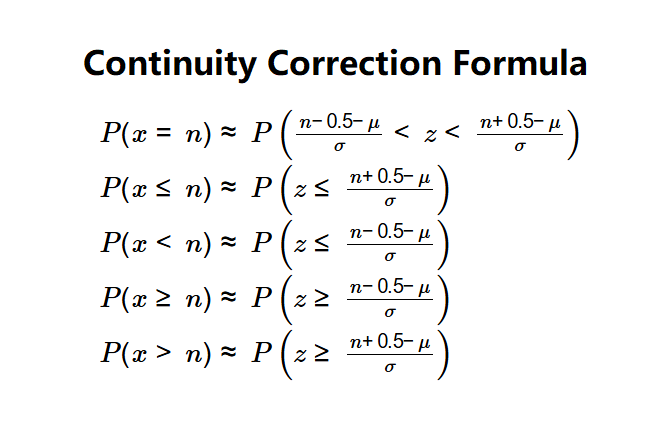 Home
Home
 Back
Back

Definition: Continuity correction is an adjustment used when approximating a discrete probability distribution (e.g., binomial) with a continuous distribution (e.g., normal). It accounts for the fact that discrete variables take integer values, while continuous variables cover a range.
Purpose: Improves the accuracy of normal approximations for binomial probabilities, especially for moderate sample sizes or probabilities near 0 or 1.
The calculator approximates binomial probabilities using a normal distribution with mean \(\mu = N \cdot p\) and standard deviation \(\sigma = \sqrt{N \cdot p \cdot (1 - p)}\). Continuity correction adjusts the discrete value \(n\) by ±0.5:
Steps:
Use when approximating a binomial distribution with a normal distribution, provided:
Example: Suppose \(N = 100\), \(n = 50\), \(p = 0.5\):
Q: Why use continuity correction?
A: It adjusts for the difference between discrete (integer) and continuous distributions, improving normal approximation accuracy.
Q: When is normal approximation valid?
A: When \(N \cdot p \geq 5\) and \(N \cdot (1 - p) \geq 5\), ensuring the binomial distribution is approximately normal.
Q: How accurate are the probabilities?
A: The calculator uses a polynomial approximation for the normal CDF, which is reasonably accurate but less precise than statistical software.
Q: Can I use this for small sample sizes?
A: Normal approximation is less reliable for small \(N\). Use exact binomial calculations for \(N < 30\).